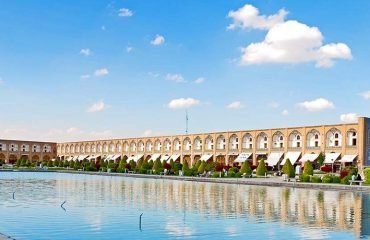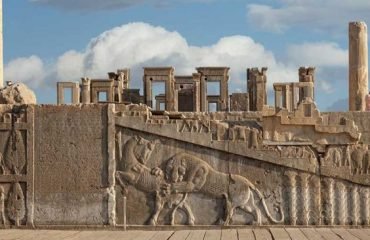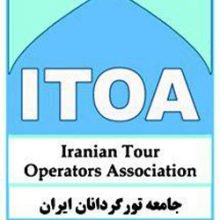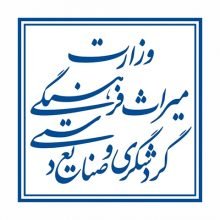
Iran UNESCO Heritage Sites
IRAN with 26 UNESCO World Heritage Sites is one of the 10 countries with the most Cultural Heritage Sites in the UNESCO’s World Heritage list.
As one of the most ancient countries of the world, Iran is a perfect destination for people who are inspired by history. According to the United Nations Educational, Scientific, and Cultural Organization (UNESCO). Iran is home to the one of the oldest civilizations of the world and boasts of 24 UNESCO world heritage sites (July 2019). 22 cultural and 2 natural sites. As designated by the UN cultural body UNESCO https://whc.unesco.org/en/statesparties/IR The first three sites in Iran, Meidan Emam, Isfahan, Persepolis and Tchogha Zanbil, were inscribed on the list at the 3rd Session of the World Heritage Committee, held in Paris, France in 1979. Some of these sites like Persepolis date back to the sixth century B.C and are among the most important cultural heritages sites of the world. Are you interested to know more about this valuable heritage? Here is a complete list of them
I
IRAN UNESCO Tangible Cultural Heritage
Cultural Sites (22)

2.Persepolis (1979)

3. Tchogha Zanbil (1979)

4. Takht-e Soleyman (2003)

5.Pasargadae (2004)

6. Arg-e Bam

7.Soltaniyeh Dome (2005)

8.Bisotun (2006)

9.Armenian Monastic Ensembles of Iran (2008)

10.Shushtar Historical Hydraulic System (2009)

11.Sheikh Safi al-din Khānegāh (2010)

12.Tabriz Historic Bazaar (2010)

13.Persian Garden (2011)

14. Jāmé mosque of Isfahan (2012)

15.Gonbad-e Qābus (2012)

16. Golestan Palace (2013)

17. Shahr-i Sokhta (2014)

18. Maymand (2015)

19. Susa (2015)

20. Persian Qanat (2016)

21.Historic City of Yazd (2017)

22.Historical Sassanian Cities (2018)
Natural Sites (2)

23. Hyrcanian Forests (2019)

24. Lut Desert (2016)
Iran UNESCO World Intangible Cultural Heritage
Apart from historical and cultural monuments that are a source of national pride for the people of their country and also a heritage for the whole world, there are also intangible heritages that shape the cultural world just as great as the former.
UNESCO defines intangible cultural heritage as those oral traditions and expressions, social practices, knowledge and practices concerning nature and traditional craftsmanship inherited from our ancestors and passed on to our descendants. Intangible heritage is not confined to museums and monuments. Also referred to as living cultural heritage, it includes all those practices from the past, as well as contemporary rural and urban practices in groups and communities.
Iranian intangible cultural heritage includes performing arts, traditional and hand-made crafts, skills associated with traditional and hand-made crafts, social traditions, customs, festivities and rituals, science and customs associated with nature and world, verbal traditions and other manifestations like languages and dialects.
For centuries people have developed their cultures, performed their rituals, and took pride in what they have been and who they are now. We walk on Persian carpets, we listen to Iranian music, we eat flatbread every day. These “intangible” heritages shape our Iranian identities, maybe even more than the so-called tangible ones. We may not visit Persepolis every day, but live with these heritages on a daily basis.
UNESCO has officially recognized and inscribed 14 elements of Iranian intangible cultural heritage. In the following find the list of Iran Intangible Cultural Heritages on the Representative List of the Intangible Cultural Heritage of Humanity until 2020.
For more information about Iran Intangible Cultural Heritage please see: UNESCO’s website!
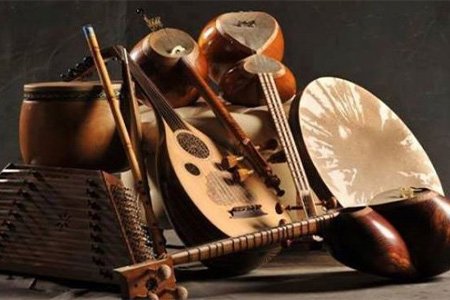
1. Radif of Iranian music (2009)

2. Traditional skills of carpet weaving in Kashan (2010)

3. Traditional skills of carpet weaving in Fars (2010)

4. Music of the Bakhshis of Khorasan (2010)

5. Pahlevani and Zoorkhanei rituals (2010)

6. Ritual dramatic art of Ta‘zīye (2010)

7. Naqqāli, Iranian dramatic story-telling (2011)

8. Traditional skills of building and sailing Iranian Lenj boats in the Persian Gulf (2011)

9. Qālišuyān rituals of Mašhad-e Ardehāl (2012)

10. Flatbread making and sharing culture: Lavash, Katyrma, Jupka, Yufka (2016)

11. Nowrouz (2016)

12. Art of crafting and playing with Kamancheh/Kamancha (2017)

13. Chogān, a horse-riding game accompanied by music and storytelling (2017)
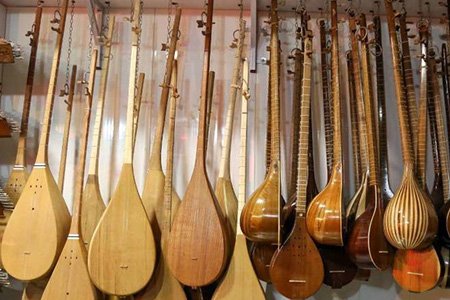
14. Traditional skills of crafting and playing Dotār (2019).
IRAN UNESCO Tangible Cultural Heritage
1-Naqsh-e Jahan Square (1979)
Naqsh-e Jahan square as the first site registered in UNESCO world heritage site list consists of four plots: Shah Mosque in the southern part, Ali Qapu Palace in the western part, Sheikh lotfollah mosque in the eastern part, and Isfahan Grand Bazaar northern part and each has their own value and beauty.
Built by Safavid king Shah Abbas I the Great only 360 years ago, it is one of the most attractive sites of Iran. It’s located in Isfahan city.

2-Persepolis (1979)
Persepolis embodies the greatness of the Persian Empire and is a symbol of Iran all over the world. The ceremonial capital of the Achaemenid Empire was built in 515 BCE and the world’s greatest archaeological sites. It’s a very good example of the architecture of that time. Gigantic sculpted phoenixes and winged bulls seem to be eternal guardians of this splendid palatial complex. Among the ruins, visitors can listen to the stories recalled by the beautiful friezes covering the walls. They share the secrets of this royal city, from ceremonies and parties to war, fear, terror and probably the king’s last supper. It’s located in Shiraz city.

3-Chogha Zanbil (1979)
Tchogha Zanbil is one a few existing and the best-preserved “Ziggurats” in the world. These massive structures are representative of Mesopotamia. Near the ancient city of Susa, this Ziggurat was a religious temple built by the Elamite and Persia’s very first building. Visitors walking around this five-storey and pyramidal structure, made out of adobe bricks, can feel the weight of history. Tchogha Zanbil is also a fascinating masterpiece of architecture, each floor having its own independent foundations, and the oldest water treatment system. Visiting the ruins of this holy city is a journey through the origin of our civilization.
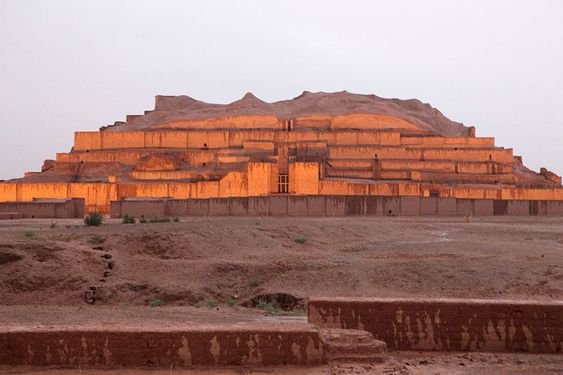
4-Takht-e Soleyman ((2003))
Takht-e-Suleyman (“Throne of Solomon”) is a vast historical site surrounding a mysterious lake, in the volcanic mountain region of West Azerbaijan which goes back to 300 thousand years ago. . This site, which melts harmoniously with the stunning natural background, has a strong spiritual significance related to the importance of fire and water for Zoroastrians. Many historical monuments and sanctuaries can be observed, among which the Sassanid fire temple dedicated to Anahita, the goddess of water. During the prehistoric era, this place also holds significance importance, as it was Iran’s biggest sanctuary, as well as an educational, religious, and social center.

5-Pasargadae (2004)
Pasargadae is not only the Achaemenids’ first city and capital founded by Cyrus II the Great, in Pars, homeland of the Persians, in the 6th century BC., but it’s also an earthly image of the paradise and an architectural example to the Persian Gardens. Discovering this ancient city is getting acquainted with the legacy of Cyrus the Great, who lies here in his tomb, the most important monument in Pasargadae. This benevolent king was a pioneer, famous for implementing the first declaration of Human Rights in history. Its city reflects its tolerance toward the different cultures of Western Asia, by synthesizing their architecture in an outstanding manner. Spanning the Eastern Mediterranean and Egypt to the Hindus River, it is considered to be the first empire that respected the cultural diversity of its different peoples. This was reflected in Achaemenid architecture, a synthetic representation of different cultures.

6-Bam citadel (2004)
As the citadel of Bam appears in the desert, it feels like a mirage. But, the ancient Achaemenid city still stands proudly, as an example of some of the earliest engineering techniques in history. This fortified medieval town is also the largest adobe building in the world. Located in the middle of a splendid desert, the city was at the crossroads of important trades routes of the Silk Road, and later became one of the main silk and cotton garment production centers. Bam drew its life from ancestral underground canals, the “qanats”, which made it a true oasis in the heart of the desert. Its construction goes back to the fourth century BC.

7-Soltaniyeh Dome (2005)
The Mausoleum of Oljaytu is in the city of Soltaniyeh, a masterpiece of Persian architecture, and a turning point in the development of Islamic architecture. The beautiful turquoise dome, surrounded by eight thin minarets, is the world’s third-biggest dome and was built during the Ilkhanid dynasty, founded by the Mongols. The interior decoration is also exceptional, believed to have inspired the dome of Florence’s cathedral and “anticipating the Taj Mahal”.it is now located in Zanjan province and was added to the UNESCO world heritage list in 2005.

8-Bisotun (2006)
Bisotun inscription is a remarkable and ancient inscription carved on a limestone cliff located in Bisotun district, in Harsin county, Kermanshah Province, western Iran.
It is made by Darius I order to narrate the story of his battles against the governors who attempted to take apart and take the control of the Empire was founded by Cyrus. The inscription is multilingual(written in three languages, Elamite, Babylonian, and ancient Persian). This is the only evidence from Achaemenid that depicts Darius I (king of Persia in 522–486 bc) re-established the Empire. This site is related to Iranians literature and culture, the presence legend of Farhad and Shirin (a poem by Nizami Ganjavi great Iranian poet).

9-Armenian Monastic Ensembles (2008)
In the northwest of Iran, close to the border with Armenia, three monastic ensembles testify of the invaluable cultural exchange between different cultures: Persian of course, but also Byzantine, Assyrian, Muslim, and Orthodox. The monasteries of St Thaddeus and St Stepanos, as well as the Chapel of Dzordzor, are precious holy sites presenting the best of Armenian architectural tradition. These well-preserved edifices, all set in incredible natural landscapes, call for contemplation and peace. They have survived over 2000 years and are still now places of pilgrimage, as a living witness of Armenian traditions in Iran.

10-Shushtar Historical Hydraulic System (2009)
Added to the Iran UNESCO world heritage site list in 2009. Shushtar Historical Hydraulic System belongs to the Sassanid era. In fact, these structures were used during the Sassanian period to use the force of water to move industrial mills. This interconnected set of waterfalls, dams, canals, and tunnels of Shushtar hydraulic system has exceptional value and testifies to human creative genius. This site is considered to be the biggest industrial complex before the industrial revolution, and its history can be traced back to the 5th century B.C. This masterpiece was engineered to divert the water of the river to provide it to the city of Shushtar. It’s still complete and functioning today. The large scale of the complex makes it exceptional and the blue waters running between the ochre rocks creates a marvelous rendering.
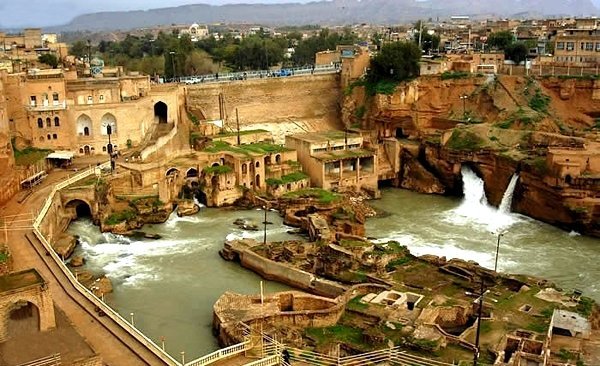
11-Sheikh Safi al-Din Khanegah and Shrine Ensemble (2010)
One of the most sacred places of Sufism in the world, the mausoleum of the prominent leader of Islamic Sufism, Sheikh Safi al-din; This historical monument located in the city of Ardabil is also the holy shrine of many important figures, such as Shah Ismail, the founder of the Safavid Dynasty. It’s an architectural and artistic masterpiece, with striking sets of golden muqarnas decorating its interiors. One after the other, the visitor can enter the seven sections and cross eight gates, to get familiar with the spirituality and principles of Sufism. This religious retreat has kept intact its mystical spirit and is still today, a centre of pilgrimage for Sufis.This magical site was added to the UNESCO world heritage list in 2010.
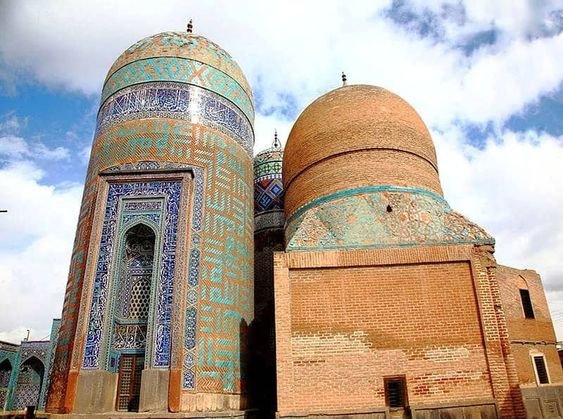
12- Tabriz Historic Bazaar (2010)
Iran is famous for its bazaars, with their narrow alleys, colorful tiny shops selling beautiful silk carpets and delicate enameled vases. Come to the Tabriz city to discover the gem of all bazaars: it’s the largest covered market in the world, one of the oldest in the Middle East and was added to the UNESCO world heritage list in 2010. Built on the famous Silk Road trading route, it brought prosperity to the region and has been a place of cultural exchange since antiquity. Many world travellers and globetrotters such as Marco Polo, Jean Chardin, and Ibn Battuta have praised the glory and significance of this bazaar.

13-Persian gardens (2011)
When designing Pasargadae on the 6th century BC, Cyrus the Great also desired to create an earthly version of the Paradise. This is what gave birth to the magnificent architecture of the Persian Gardens, which can nowadays be appreciated at famous places such as Eram and Shazadeh Gardens. Divided into four geometrical parts and integrating water with genius engineering, they have deeply influenced the art of garden design in different regions of the world. Among numerous gardens in Iran, there is a list of 9 Iranian gardens inscribed as the world heritage.

14-Jameh Mosque of Isfahan (2012)
Located in the historic centre of Isfahan, the Masjed-e Jāmé (‘Friday mosque’) can be seen as a stunning illustration of the evolution of mosque architecture over twelve centuries, starting in ad 841. It is the oldest preserved edifice of its type in Iran and a prototype for later mosque designs throughout Central Asia. The complex, covering more than 20,000 m2, is also the first Islamic building that adapted the four-courtyard layout of Sassanid palaces to Islamic religious architecture. Its double-shelled ribbed domes represent an architectural innovation that inspired builders throughout the region. The site also features remarkable decorative details representative of stylistic developments over more than a thousand years of Islamic art.

15.Gonbad-e Qābus (2012)
The 53 m high tomb built in ad 1006 for Qābus Ibn Voshmgir, Ziyarid ruler and literati, near the ruins of the ancient city of Jorjan in north-east Iran, bears testimony to the cultural exchange between Central Asian nomads and the ancient civilization of Iran. The tower is the only remaining evidence of Jorjan, a former centre of arts and science that was destroyed during the Mongols’ invasion in the 14th and 15th centuries. It is an outstanding and technologically innovative example of Islamic architecture that influenced sacral building in Iran, Anatolia and Central Asia. Built of unglazed fired bricks, the monument’s intricate geometric forms constitute a tapering cylinder with a diameter of 17–15.5 m, topped by a conical brick roof. It illustrates the development of mathematics and science in the Muslim world at the turn of the first millennium AD.

16-Golestan Palace (2013)
The lavish Golestan Palace is a masterpiece of the Qajar era, embodying the successful integration of earlier Persian crafts and architecture with Western influences. The walled Palace, one of the oldest groups of buildings in Teheran, became the seat of government of the Qajar family, which came into power in 1779 and made Teheran the capital of the country. Built around a garden featuring pools as well as planted areas, the Palace’s most characteristic features and rich ornaments date from the 19th century. It became a centre of Qajari arts and architecture of which it is an outstanding example and has remained a source of inspiration for Iranian artists and architects to this day. It represents a new style incorporating traditional Persian arts and crafts and elements of 18th century architecture and technology.

17-Shahr-e Sukhteh (2014)
This belongs to what is perhaps the oldest developed city in the world, 5000 years of history lies in this site located in Sistan and Baluchestan province. Called Shahr-e Sokhte, the “Burnt City”, the ruins recall the story of this merchant city and manufactural centre.
Founded around 3200 BCE, the city was populated during four main periods up to 1800 BCE, during which time there developed several distinct areas within the city. These include a monumental area, residential areas, industrial zones and a graveyard.Archaeologists made unique discoveries here, such as the first animation, and the world’s earliest known artificial eyeball. The rise and sudden fall of this Bronze Age city remain tainted with mystery. Nowadays; ashes and fragments of pottery invite the visitor to rebuilt it in imagination.

18- Meymand (2015)
The village of Meymand Located in Shahre Babak country, Kerman province, and its surroundings are truly unique. This area is a rare example of rocky architecture, with houses carved in the foot of mountains. Humans started to inhabit here 12.000 years ago. Unlike the villages of Cappadocia in Turkey, these troglodytic houses are still inhabited, left as they were centuries before.
Some 3000 years ago, semi-nomadic tribes of the region with triple migration in the year, started to settle down in those cave dwellings with the unique lifestyle which has been kept alive till now.

19- Susa (2015)
Located in the south-west of Iran, in the lower Zagros Mountains, the property encompasses a group of archaeological mounds rising on the eastern side of the Shavur River, as well as Ardeshir’s palace, on the opposite bank of the river. The excavated architectural monuments include administrative, residential and palatial structures. Susa contains several layers of superimposed urban settlements in a continuous succession from the late 5th millennium BCE until the 13th century CE. The site bears exceptional testimony to the Elamite, Persian and Parthian cultural traditions, which have largely disappeared.
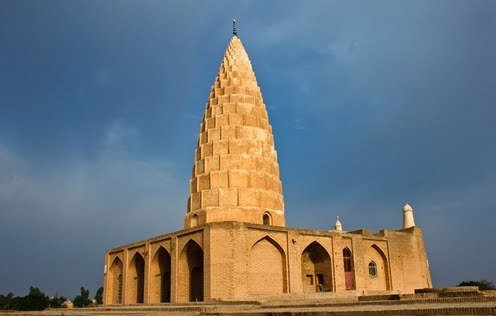
20-Persian Qanat (2016)
The ancient qanat system has allowed agriculture and life to be spread throughout the arid regions of the Iranian plateau, hence people assumed qanat as living, considered gender for it. This masterpiece of engineering dates back to the first millennium BC. Based on complex calculations and architectural techniques, this system transports water along kilometres into underground tunnels, only with the power of gravity. It’s still functional in today Iran. Eleven well-preserved qanats located in Khorasan, Yazd, Kerman, Isfahan, and Markazi provinces have been registered by UNESCO, as an exceptional testimony of the desert’s civilizations.

21-Historic City of Yazd (2017)
The City of Yazd is located in the middle of the Iranian plateau, 270 km southeast of Isfahan, close to the Spice and Silk Roads. It bears living testimony to the use of limited resources for survival in the desert. Yazd holds a special place in the heart of most tourists, often their favorite destination in Iran. This historical city has indeed everything to amaze the visitors and transport them to the tale of the 1001 nights. Its traditional architecture is a demonstration of ingenuity, with its wind-catchers (the oldest non-mechanical cooling system) and its Qanat network, bringing water in this city located in the middle of the desert. Its centre is a maze of narrow ochres streets, with small abode houses and rooftops offering a breathtaking view. Yazd is also home to the most important Zoroastrian community, adding to the cultural diversity of this city.

22- The Ensemble of Historical Sassanian Cities in Fars province (2018)
The eight archaeological sites situated in three geographical areas in the southeast of Fars Province: Firuzabad, Bishapur and Sarvestan. The fortified structures, palaces and city plans date back to the earliest and latest times of the Sassanian Empire, which stretched across the region from 224 to 658 CE. Among these sites is the capital built by the founder of the dynasty, Ardashir Papakan, as well as a city and architectural structures of his successor, Shapur I. The archaeological landscape reflects the optimized utilization of natural topography and bears witness to the influence of Achaemenid and Parthian cultural traditions and of Roman art, which had a significant impact on the architecture of the Islamic era.

23-Lut Desert (2016)
The Lut Desert, or Dasht-e-Lut, is located in the south-east of the country. In Persian, “Lut” means “bare”, which makes a lot of sense as this dessert is literally among the hottest and most arid spots on the Earth, where almost no living creature is able to survive. It’s here, in the southeast of Iran, that has been recorded the highest temperature on the Earth: 70.7°C! As one of the biggest deserts in the world that offers no mercy to the lost wanderers. Well accompanied though, the visitor can appreciate the wonders created by nature: shaped by strong winds and the stream of the only salty river of the arena, massive sand mountains have emerged. Those colossal yarding formations present an exceptional geological process and an astonishing result in the eyes of the explorer because desert never leaves the one whom once had been caught by its enchantment, just as Alfons Gabriel once said.

24-Caspian Hyrcanian mixed forests (2019)
Hyrcanian forests form a unique forested massif that stretches 850 km along the southern coast of the Caspian Sea. The history of these broad-leaved forests dates back 25 to 50 million years, when they covered most of this Northern Temperate region. These ancient forest areas retreated during the Quaternary glaciations and then expanded again as the climate became milder. Their floristic biodiversity is remarkable: 44% of the vascular plants known in Iran are found in the Hyrcanian region, which only covers 7% of the country. To date, 180 species of birds typical of broad-leaved temperate forests and 58 mammal species have been recorded, including the iconic Persian Leopard (Panthera pardus tulliana).

Iran UNESCO Intangible Cultural Heritage
1- Radif of Iranian music (2009)
Radif is the essence of the classical music of Iran. Musicians use Radif as a set of musical tools for their performances and compositions. They can be vocal or instrumental and performed on a variety of instruments with different techniques. The Radif satisfies both the aesthetic practice and the philosophy of Persian musical culture. It is a form of art that requires self-devotion and a decade of practice to master this art.

2- Traditional skills of carpet weaving in Kashan (2010)
The enchanted small city of Kashan has an old reputation for artisan Persian carpet weaving, from silk or cotton threads. The carpet weaving process starts with a design. The colours of Kashan carpets come from a variety of natural dyes, such as vine leaves and pomegranate skin. Almost two-thirds of the carpet weavers are women. They pass on their traditional skills of carpet weaving to their daughters through apprenticeship.

3- Traditional skills of carpet weaving in Fars (2010)
Persian carpets of Iran have a long history of the repertoire in the world. The traditional skills of carpet weaving in the South-West of Iran, the province of Fars, have remained untouched for centuries. The men of the family shear the wool during spring or autumn. They construct the carpet loom horizontally on the floor. The women then convert the wool into yarn on snipping wheels. The use of natural dyes and personal touches reflect their nomadic lifestyle. The skills and traditional craftsmanship are passed on from mothers to daughters and fathers to sons. No two carpets look the same.

4- Music of the Bakhshis of Khorasan (2010)
The Bakhshis are a group of people in Khorasan province with the significant musical skill of playing the dotar, a two-stringed long-necked lute. Their music, known as Maghami, consists of instrumental and vocal pieces performed in different languages narrate Islamic and epic poems. The Bakhshis’ music transmits history, culture and religious fundamentals. The Bakhsis are considered as the guardians of the regional cultural heritage of the community.

5- Pahlevani and Zoorkhanei rituals (2010)
Pahlevani is a form of traditional ancient sport combined with music, dance movements and acrobatics in Iran. Zoor-Khaneh is the domed venue where Pahlevani ritual takes place at. To obtain a title and become qualified in this practice, one must become competent in both physical and spiritual aspects of well being. Each Zoor-Khaneh has a master named Morshed, who is not only an instructor but in charge of spreading good moral amongst athletes. Upon his instructions through the sound of his music, the athletes start the show. The lyrics of the songs and stories sang by Morshed stem from spirituality, religion and histories of national heroes.

6- Ritual dramatic art of Ta’zīye (2010)
Ta’zieh is a religious performance amongst Shia’ Muslims of Iran. This performance is unique to the holy month of Muharram, and it is considered as an intangible cultural heritage of Iran by UNESCO. This performance is a re-enactment of the battle of Karbala. This battle occurred on October 10 680 AD, between the troops of Yazid and the grandson of the Islamic prophet Muhammad, called Hossein. Elements of conflict between good and evil, sacrifice and martyrdom are showcased in a Ta’zieh performance. The choice of colors in dressing the characters are symbolic and depict meanings to the audience. The sounds and music chosen could resemble a musical performance; however, some would regard it as a religious Opera.

7- Naqqāli, Iranian dramatic storytelling (2011)
Naqqāli is an ancient form of performing arts, where a skilled narrator is telling a story to an audience. It is an improvised form of dramatic performance and storytelling, recounting on Persian literature and culture as well as traditional music. The narrator needs to captivate the audience through his skills and talent. This form of art used to be very popular in the old days. Naqqāli was formerly performed in caravanserais, tea-houses and on the streets. Globalisation and urbanisation have caused a steep decline in interest in this form of art. Therefore, Naqqāli has been registered on UNESCO’s list of intangible cultural heritage in need of urgent safeguarding in 2011.

8- Traditional skills of building and sailing Lenj boats in the Persian Gulf (2011)
Lenj boats are hand-built wooden boat vessels, used by inhabitants of the Northern coast of the Persian Gulf for fishing, trading and pearl diving. The skills associated with Lenj making, fishing, weather forecasting, wind-navigation and sailing, in general, comprise the traditional know-how of this ancient form of art. The navigational knowledge, philosophy, ritualistic background and sailing skills were traditionally passed on from father to son. Sadly, nowadays the community of sailors has shrunk and the traditional skills of building and sailing Lenj boats are to be safeguarded, if were to remain as part of the intangible cultural heritage of this region in Iran.

9- Qalisuyan rituals of Mashhad-e-Ardehal in Kashan (2012)
The only Islamic religious ceremony held according to the solar calendar. A symbolic ceremony that always brings thousands of people to Mashhad Ardehal, 42 km west of Kashan. The legend of Soltan Ali, a holy figure among the people of Kashan, Fin, Khaveh and Nashalj, brought about an important ritual called Qalishuyan that takes place on every year on the nearest Friday to the seventeenth day of October 9 since hundreds of years.
The name of this ritual comes from two words of ghali meaning rug, and Shuyan that means the ones who wash the rug in Persian. According to this legend, Soltan Ali was martyred, his body carried in a carpet to be washed into a holy stream of the area and buried by the people of Fin and Khaveh. Today the qalishuyan is being performed with a sophisticated order of rites by a huge gathering of four villages and cities named above in the site of Soltan Ali’s mausoleum. This procedure has maintained by oral transmission from each community to the other one.

10- Nowruz (2016)
Nowruz essentially means ‘’new day’’. Nowruz is the ancient Persian New Year Feast which usually falls on the 20th or 21st of March. Nowruz is a UNESCO recognised hallmark event. It is inscribed in the list of intangible cultural heritages of Iran as Persians have been celebrating it for over thousands of years. Nowruz is deeply rooted in the rituals and traditions of Persians. Ceremonies and cultural pre-celebratory events are leading up to Nowruz, as well as customs that have been practiced during the 13 days celebratory period.

11- Flatbread making and sharing culture: Lavash, Katyrma, Jupka, Yufka (2016)
There are plenty of beliefs and traditions related to the flatbread within the confines of the countries such as Azerbaijan, Iran, Kazakhstan, Kyrgyzstan and Turkey. The main subject about the flatbread which is got various names in different cultures, can be seen through the preparation and baking it while involving family members and neighbours in rural regions or traditional bakeries participate together in the process using an earth or stone oven in the ground.
In Iran, the flatbread is called Lavash. From traditional bakeries in every neighborhood to the most remote pristine areas that Iranian nomads live, the culture of making and sharing flatbread is a practice that shows hospitality, solidarity and shared cultural beliefs that passes on within communities.

12.Chogan, a horse-riding game accompanied by music and storytelling (2017)
More than 2000 years of history stands behind the game of the Persian king; Chogan. Chogan is considered as a cultural element that joins to the athletic aspect of a royal practice. It is defined to be a traditional horse-riding competition that inserted musical and storytelling elements in it. Bearers of the Chogan include three primary groups: the players, the storytellers and the musicians with a powerful association to the history, literature, handicrafts and the identity of its practitioners. Dariush Kabir held the Chogan game in Persepolis and Naghsh Jahan Square in Isfahan was designed to hold the polo game in front of Safavid kings. In the works of great poets such as Ferdowsi and Roudaki, the popularity of this game in Iran has been mentioned many times.

13-Art of crafting and playing with Kamancheh/Kamancha (2017)
Kamancheh, as pronounced in Persian, is an Iranian bowed string instrument dates back to one thousand years before that is an essential element of classical and folkloric music in Iran and other countries of the region. Kamantcheh or fiddle is one of Iranian instruments and music of East. The first historical signs of the fiddle can be seen in the book “Al-Kabir Music” by Labo Nasr Farabi in the fourth century AH. In this book, he mentions the fiddle as an Iranian instrument.
The fiddle was one of the main instruments of Iranian music during the Safavid and Qajar eras, and the first recorded sound of the fiddle dates back to the early twentieth century. The art of making and playing Kamantcheh was recorded in 2017.
The melody of Kamancha conveys different themes from mythological to the mystic and comic to state the prominent part of this instrument in the musical culture of its birth region. The knowledge of performing Kamancheh and the art of crafting it is perceived and transmitted from generation to generation as a strong part of the intangible cultural heritage of its bearers.

14-Traditional skills of crafting and playing Dotar (2019)
The dotar is a traditional crafted instrument with domination expanded through the east of Iran within a vast historic region once renowned as the Greater Khorasan. This crafted folkloric musical instrument is the tune of the history, ethnicity and culture of its bearers who mostly are farmers including male and female crafters and players.
The skill and knowledge of crafting and playing the dotar are passed through traditional master-pupil training. In the dotar regions, on important social and cultural events and ceremonies such as weddings, rites and local festivals performers play the dotar and recount epic and gnostic narrations related to their ethnic history.
This instrument is not usually played with a percussion and is wound with nails. Traditional skills of crafting and playing Dotar is one of precious Iran cultural and intangible heritage at UNESCO which inscribed in 2019.



